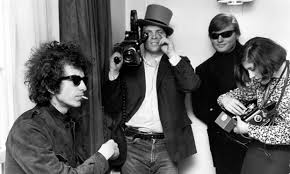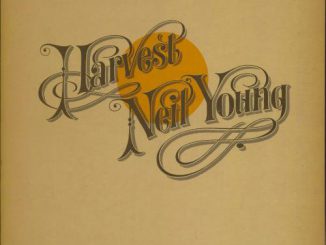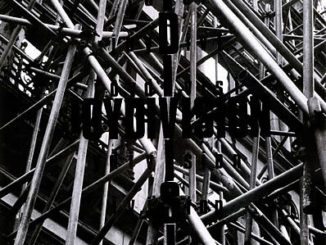Today is the 50th Anniversary of Dylan’s Subterranean Homesick Blues – you may or may not care. Richard Williams of The Guardian argues that this “two-minute, rickety-rackety masterpiece recorded in a single take changed music for ever”…..did it?

It was, the historians tell us, a cold midwinter day in New York City, with the temperature close to zero, when Bob Dylan made his way to Columbia Records’ studio A at 799 Seventh Avenue to change history with a song called Subterranean Homesick Blues.
At that point, on 14 January 1965, Dylan was known to the world as a folk singer who delivered politically charged songs with a raw, seemingly wayward voice against the strum of his own acoustic guitar, punctuated by shrill bursts from a harmonica held in a neck harness. This was the guise in which he had appeared in Greenwich Village four years earlier, a 19-year-old from Minnesota who infused the influences of dust-bowl ballads and delta blues with a restless energy, his urchin charisma buttressed by the beguiling but almost entirely fabricated personal mythology with which he distanced himself from his comfortable, middle-class Jewish family.
After a false start with a self-titled debut, his second and third albums, The Freewheelin’ Bob Dylan and The Times They Are A-Changin’, alerted his contemporaries to the arrival of something new. With his unpolished voice, his well-worn jeans and his songs about crooked politicians, racist murders and the looming shadow of nuclear annihilation, Dylan introduced the notion of authenticity to teenagers born during the baby boom, now ready for something deeper, stronger and truer than Tin Pan Alley platitudes.
The guise of Village troubadour served Dylan so well that he could have stuck to it very profitably for the rest of his life. But there was more to do, and on that Thursday in January 1965, it involved a return to the rock’n’roll he had played with his high-school bands, the Shadow Blasters and the Golden Chords. There had been a tentative effort along those lines earlier, in November 1962, when his original producer, John Hammond, brought in a group of jazz-trained older musicians to accompany him on a couple of songs at the Freewheelin’ sessions, including one called Mixed-Up Confusion, a two-chord blues taken at a fast, backbeat-driven clip. It was released a month later as a stand-alone single, between his first two albums, but made little impact, seemingly coming along too early for his initial audience – mostly folkies at that stage – to appreciate this pre-echo of the direction he was destined to take.
For the next two years, he would perform as a solo artist, creating a template for every singer-songwriter over the next half century. But the almost simultaneous emergence of the Beatles and the Stones caught his attention, as did the Animals’ arrangement of House of the Rising Sun, inspired by the version on his first album, which topped the US and UK charts in 1964. This was a wave he knew he had to catch.
“Nobody told me to go electric,” he would say a year later. “No, I didn’t ask anybody. Nobody at all.” But he had a willing accomplice in his new producer, Tom Wilson, who assembled the musicians in studio A for the second day of the three in which Dylan recorded songs for his next album, which would be released that March under the title Bringing It All Back Home.

The previous day, he had approached the microphone in his usual guise as a solo singer. There was only one hint of change that day: the presence of John Sebastian, another Village folkie, who was in the process of forming his own group, the Lovin’ Spoonful. Sebastian supplied bass guitar accompaniment on two of the six songs Dylan recorded that day, in what turned out to be prototype versions. Among them – and among those to which Sebastian did not make a contribution – was one announced on tape by Wilson. “Quiet on the set,” he orders. “Rolling,” an engineer says, and the producer responds with the equivalent of a Hollywood clapperboard: “CO 85275, Subterranean Homesick Blues No 10, take one.”
Dylan’s deadpan incantation of his semi-comic verses and the “No 10” suffix suggest that the song was originally seen as a further iteration of the talking-blues numbers that had provided comic relief on his earlier albums: Talkin’ New York, Talkin’ World War III Blues, I Shall Be Free and I Shall Be Free No 10. But a different fate was in store.
The next day, with John Hammond Jr and Bruce Langhorne on electric guitars, jazz musician Bill Lee (father of film-maker Spike) on bass, session man Bobby Gregg on drums, an unidentified pianist and Dylan himself on acoustic guitar and harmonica, the song was cut in a single take. In two minutes and 22 seconds of jangling, rickety-rackety, homemade folk-blues-rock, something new was born – although, like all Dylan’s music, it sprang from firm roots. “It’s from Chuck Berry, a bit of Too Much Monkey Business and some of the scat songs of the 40s,” he told Robert Hilburn of the Los Angeles Times in 2004.
There’s a pinch of Woody Guthrie and Pete Seeger’s Take It Easy, too, in the jumbled images that spilled out almost faster than the ear could process them, nevertheless making perfect sense to its intended audience, who revelled in the truculence of its rapid-fire litany of instructions: “Don’t follow leaders/Watch the parking meters” and “Better stay away from those/That carry around a fire hose.” Most tellingly, the gnomic wisdom of “You don’t need a weatherman/To know which way the wind blows” gave a name to a revolutionary student group whose members were, for a while, among America’s most wanted fugitives from justice following a campaign of bombings aimed at banks and government buildings.
When Dylan stood in an alley behind the Savoy hotel during a British tour four months after the recording session, facing the camera of the documentaristDA Pennebaker and holding up and tossing away cards on which key words and phrases from the song were scrawled, another key influence was revealed. At the edge of the frame, conversing with Dylan’s sidekick Bob Neuwirth, lurked Allen Ginsberg. Alongside Berry’s R&B and all the other influences, the song had co-opted the urgency, the iconoclasm and the ecstatic surrealism of the beat poets. Here was a different Howl for a different generation, throbbing with electric energy.
But still the world was not quite ready. In Britain that spring, with anticipation of Dylan’s tour building strongly, the song reached No 9 in the singles charts. In the US, it barely crept into the top 40. He used it to lead off the half-electric, half-acoustic new album: a clear statement of intent. Meanwhile, in dressing rooms around Europe, between solo performances that felt like the end of a chapter, he was busy making the final adjustments to a new song called Like a Rolling Stone, with which the revolution would be complete.
You can also watch the video on the Guardian Website here
You want Dylan vinyl, CDs, memorabilia (anything Dylan related for that matter) then be sure to check the Dylan Collectors Store at eil.com




Be the first to comment